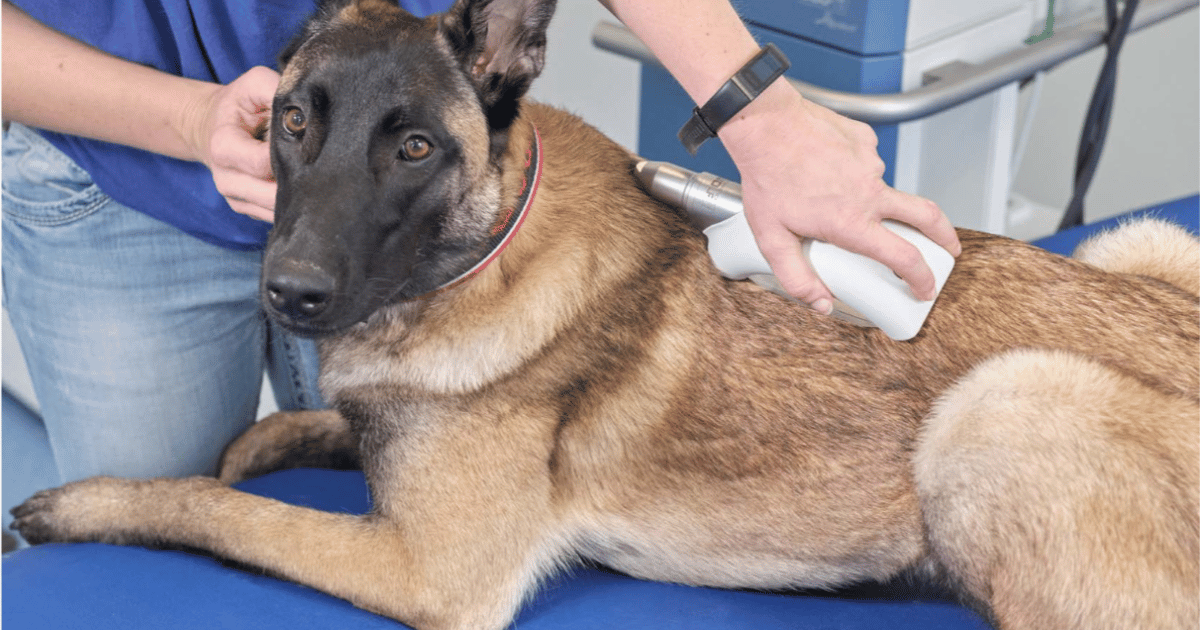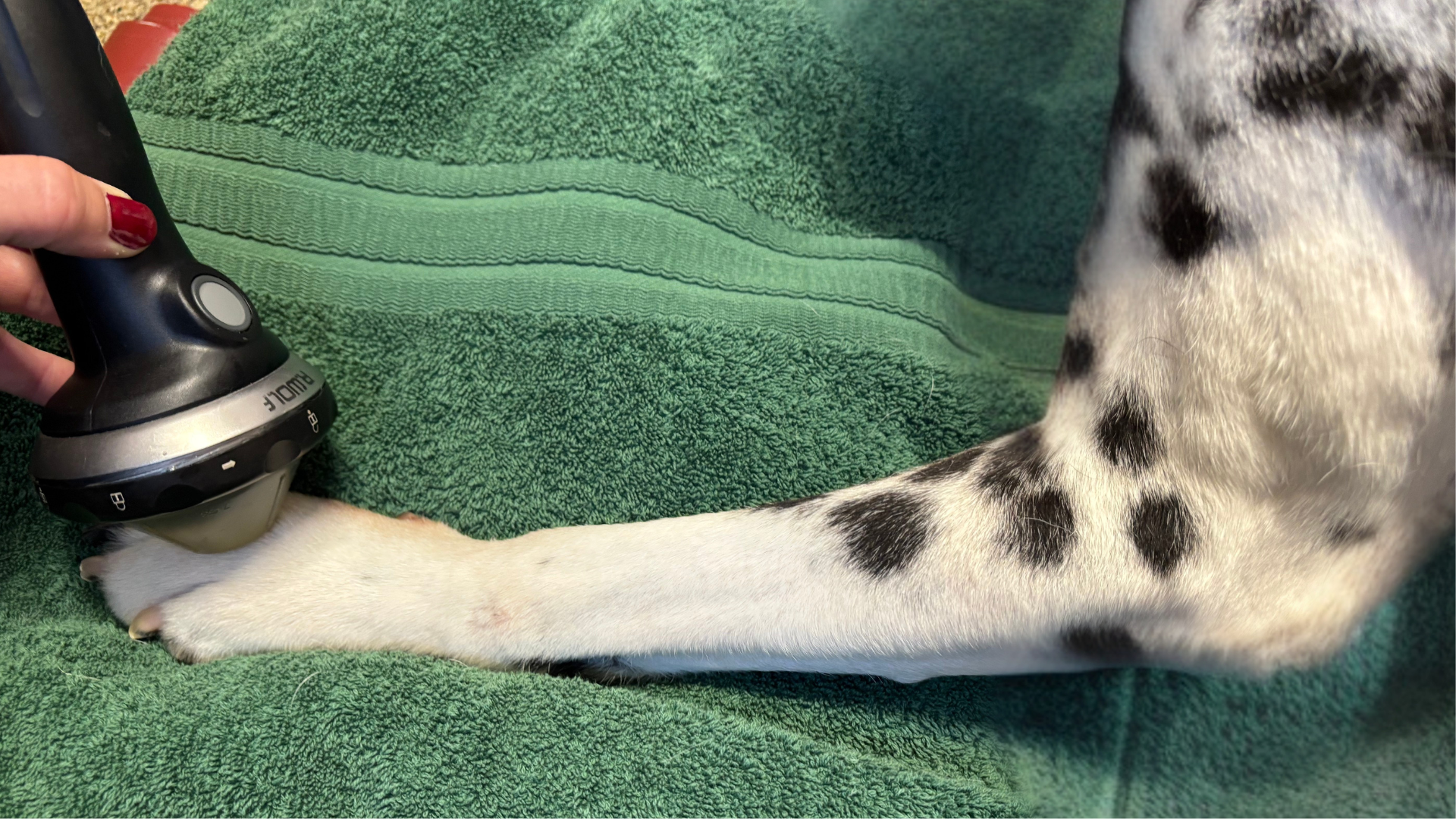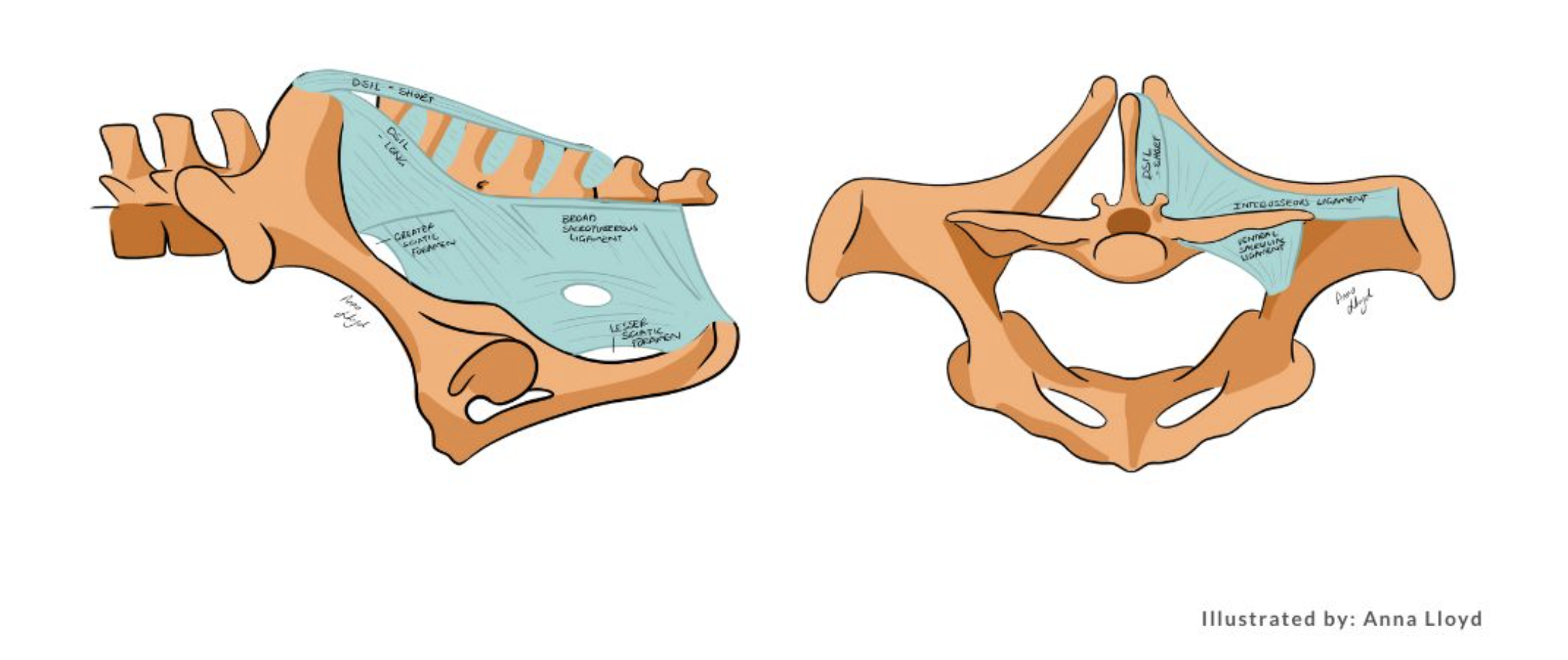Case-specific protocols for the PiezoWave2T Vet therapy provide optimal results
One of the many advantages of the PiezoWave2T Vet shockwave therapy is the ability to treat each veterinary patient as a unique case. This is due to the broad range of energy that can be applied and the specificity of the therapeutic focal zone. In this blog we compare two published shoulder protocols that provide similar results and list key points to consider when determining a PiezoWave2T Vet protocol for a specific patient.
When utilizing shockwave therapy, it is important to understand the basic science of shockwave, the biologic mechanism of action, and many important details of the case at hand.
ELvationUSA Vet has previously discussed that determining the best dosage for shockwave therapy is not a simple task. It has been noted that different protocols can result in similar results. Currently, there are two different published protocols for treating ultrasound-diagnosed supraspinatus tendinopathy of the shoulder and both show very positive results.
- In a 2023 retrospective shoulder study by Tomlinson et al, the PiezoWave protocol used to treat the supraspinatus tendons was 750 pulses with an EFD between 0.117 and 0.173 mj/mm2 applied once a week for three weeks and the follow-up diagnostic ultrasound was performed after another 3 weeks.
- In the 2022 published shoulder case studies by Heather Owen, the PiezoWave protocol used to treat the supraspinatus tendon was 1000 pulses at an EFD of 0.039 mj/mm2 applied twice a week for a total of 2 weeks with follow diagnostic ultrasound at 8 weeks and again at 18 months.
(In both cases the gel pad was 5 or 10 mm depending on the depth of the lesion identified via diagnostic ultrasound. Also, the dogs were on exercise restrictions that progressed to controlled exercise over time)
Both publications demonstrated healing of the tendon via diagnostic ultrasound images. The case study from Dr. Owen was an N=1; however, per personal communication, she has had many shoulder tendons heal with this protocol. She also has spread the four PiezoWave treatments out to either weekly or every other week. The results of follow-up ultrasounds and final recovery do not seem to differ. However, anecdotally, the pet seems more comfortable quicker when treatments are closer together.
This comparison of protocols demonstrates that different shockwave protocols can provide similar positive results. ELvationUSA Vet believes the veterinary practitioner should treat each case individually and that there are many different elements in determining the shockwave protocol for each case. Following up with diagnostics to confirm results may include digital palpation, stance analysis, force plate analysis, musculoskeletal ultrasound, or musculoskeletal MRI.
Considerations when determining a case-specific PiezoWave2T Vet protocol
- The owner's goal!
- The owner's available time, finances, and physical ability to handle this animal.
- Is the patient’s pain under control?
- Is the patient on medications? If so what?
- What is the age, job, and shome environment of the specific patient?
- Does this animal have comorbidities that need to be considered?
- Will the owner be concerned if the pet has post-treatment soreness?
- What is the purpose of the shockwave treatments?
- What is the diagnosis for prescribing shockwave therapy?
- Is the injury acute or chronic?
- What type of tissue is being treated? Muscle, tendon, ligament, bone, cartilage, joint fluid?
- Is the patient on exercise restriction, doing specific rehab or home exercise, or competing shortly
 This is just a sample list of the many considerations that need to be managed when deciding on a protocol for a specific case. There is no cookbook solution for the perfect therapeutic shockwave plan. To make the best choices with PiezoWave2T Vet protocol determination it is important to understand the mechanism of action and physics of shockwave therapy, the biology of tissue healing, as well as, your particular patient and the animal's owner.
This is just a sample list of the many considerations that need to be managed when deciding on a protocol for a specific case. There is no cookbook solution for the perfect therapeutic shockwave plan. To make the best choices with PiezoWave2T Vet protocol determination it is important to understand the mechanism of action and physics of shockwave therapy, the biology of tissue healing, as well as, your particular patient and the animal's owner.
It is the responsibility of the veterinary practitioner to be educated, practice the best medicine, and consent and inform. ELvationUSA provides suggestions for both equine and small animal treatments within their product users guides and education throughout their Shockwave Resources website. Personalized training and support is also available.
ELvation Marketing Team
Combining sales and flexible customer support with many years’ in-depth knowledge of medical equipment we offer customized solutions to create value with long-term investments and medical supplies. ELvation’s strength lies in its ability to combine the apparently contradictory needs of improving the standards of patient care by providing high-quality medical technology and good corporate profitability. We have a special partnership with Richard Wolf GmbH as their long-term authorized Sales & Service Team for piezo shockwave systems.



